Over time the concrete cracks and crumbles. Well, most concrete cracks and crumbles. Structures built in ancient Rome still stand, displaying remarkable durability despite conditions that would devastate modern concrete.
One of these structures is the large cylindrical tomb of the noblewoman from the 1st century BC. Cecilia Metella. New research shows that the quality of her tomb's concrete may exceed that of her contemporary male monuments due to the volcanic aggregate the builders chose and unusual chemical interactions with rain and groundwater with that aggregate over two millennia. /P> 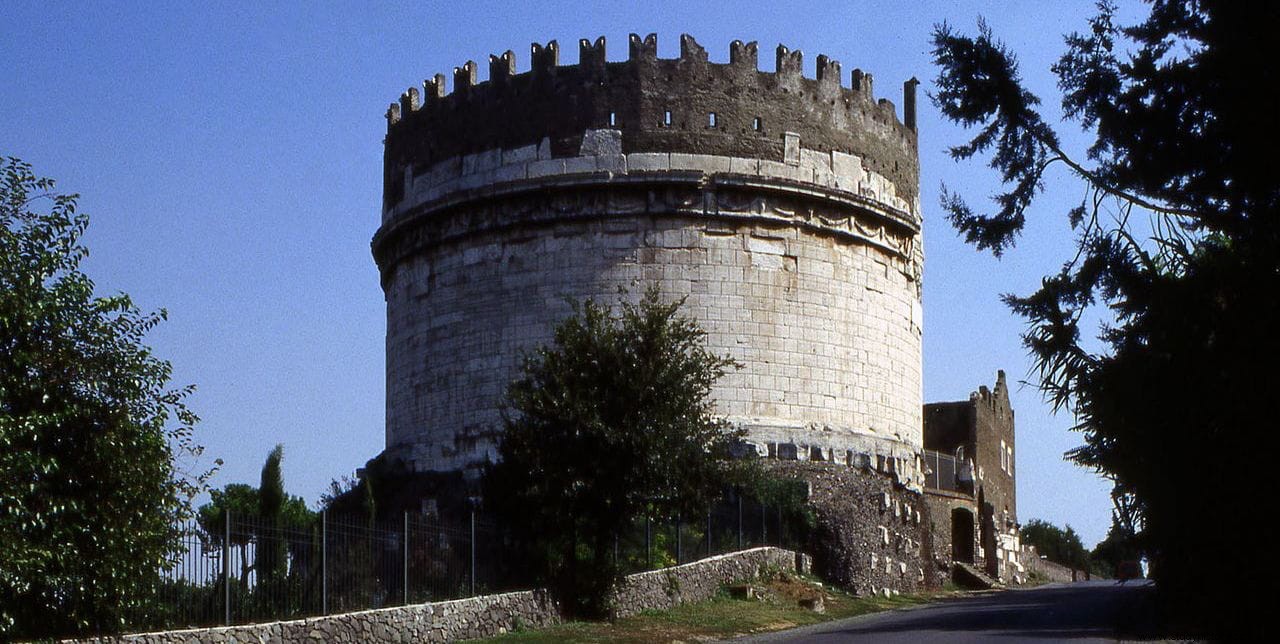
The construction of this innovative and robust monument and landmark on the Via Appia indicates that it was held in great respect , says Marie Jackson, a research associate professor of geology and geophysics at the University of Utah, and the fabric of concrete 2,050 years later reflects a strong and resilient presence . The research was published in the Journal of the American Ceramic Society .
Who was Cecilia Metella?
The tomb of Cecilia Metella is a landmark on the ancient Roman road known as the Appian Way. It consists of a drum-shaped tower that sits on a square base, in total about 21 meters high and 29 meters in diameter. Built around 30 B.C., at the transition from the Roman Republic to the Roman Empire led by Emperor Augustus, the tomb is considered one of the best-preserved monuments on the Appian Way (in the 14th century a castle was built attached to the tomb).
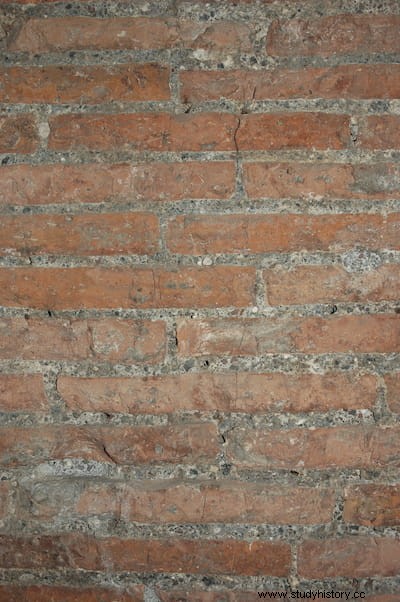
Cecilia herself was a member of a wealthy family, the daughter of a Roman consul. She was the daughter-in-law of Marcus Licinius Crassus, a Roman general and statesman who famously formed a triumvirate alliance with Julius Caesar and Pompey.
Not much else is known about Cecilia's life, but the enduring magnitude of her tomb has drawn the attention of visitors for centuries, including Lord Byron, who wrote about the tomb in Childe Harold's Pilgrimage at the beginning of the 19th century. After describing the fortress-like structure, Byron asks:
Jackson visited the tomb in 2006 with Dottoressa archaeologist Lisa Gianmichele and with a permit from the Soprintendenza Archeologia di Roma to collect small samples of the mortar for analysis. It was a very hot day in June , he says, but when we went down the steps to the sepulchral corridor the air became very cool and damp . He noted the compact, cohesive, and almost perfectly preserved brick masonry walls, and the outcrop of nearly water-saturated volcanic rock in the substructure. The atmosphere was very calm , he adds, except for the fluttering of pigeons in the open center of the circular structure .
What is Roman concrete?
Before going into details, let's orient ourselves in the terminology of concrete. If you walk down any sidewalk, you will see that concrete is made of an aggregate (rock sands and gravels) and a cement binder. The cement in a modern sidewalk is probably Portland cement, which is produced by heating limestone and clay minerals in a kiln and adding a small amount of plaster.
The tomb is an example of the refined concrete construction technologies of late Republican Rome that do not contain cement. These technologies were described by the architect Vitruvius at the time the tomb of Cecilia Metella was being built. The construction of thick walls of bricks or aggregates of volcanic rock joined with mortar made with hydrated lime and volcanic tephra (porous glass fragments and crystals from explosive eruptions), would give rise to structures that for a long period of time would not collapse .
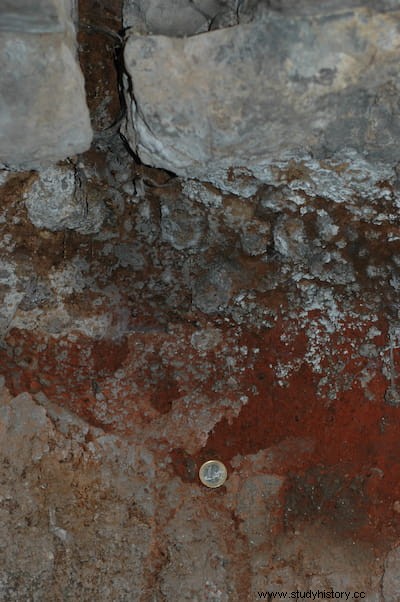
Vitruvius' words are proven true by the many Roman structures still standing today, such as Trajan's markets (built between 100 and 110 AD, more than a century after the tomb) and the structures such as piers and breakwaters, which Jackson and his colleagues have also studied.
What the ancient Romans could not have known, however, is how crystals of the potassium-rich mineral leucite in the volcanic tephra aggregate would dissolve over time to beneficially reshape and rearrange the cohesion of the concrete.
To understand the mineral structure of concrete, Jackson teamed up with researchers Linda Seymour and Admir Masic of the Massachusetts Institute of Technology and Nobumichi Tamura of the Lawrence Berkeley National Laboratory. They delved into the microstructure of concrete with a series of powerful scientific tools.
Samples such as ancient mortar are very heterogeneous and complex, as they are made up of a mixture of different crystalline phases with grain sizes ranging from a few micrometers to a few nanometers says Tamura.
Seymour, who participated in this study as a doctoral student at MIT and is now a project consultant at the engineering firm Simpson, Gumpertz &Heger, performed additional analyzes on the samples.
Each of the tools we used provided a clue about the processes in the mortar she says. Scanning electron microscopy showed the microstructures of the mortar building blocks at the micron scale. Energy dispersive X-ray spectrometry showed the elements that make up each of those building blocks. This information allows us to quickly explore the different areas of the mortar, and we can select the building blocks related to our questions she explains. The trick, she adds, is to accurately hit the same building block target with each instrument when that target is only a hair's breadth across.
Why is the concrete of Cecilia's tomb so unique?
In the thick concrete walls of the tomb of Cecilia Metella, a mortar containing volcanic tephra from the nearby Pozzolana Rossa pyroclastic flow (a dense mass of hot tephra and gases expelled explosively from the nearby Alban Mountains volcano) binds together large chunks of brick and lava aggregates. It is a mortar very similar to the one used on the walls of Trajan's Markets 120 years later.
In earlier analyzes of the Trajan's Markets mortar, Jackson, Tamura, and their colleagues explored the mortar's "glue," a building block called the C-A-S-H (calcium-aluminum-silicate-hydrate) bonding phase, along with a mineral called strätlingite. . The strätlingite crystals block the propagation of microcracks in the mortar, preventing them from joining together and fracturing the concrete structure.
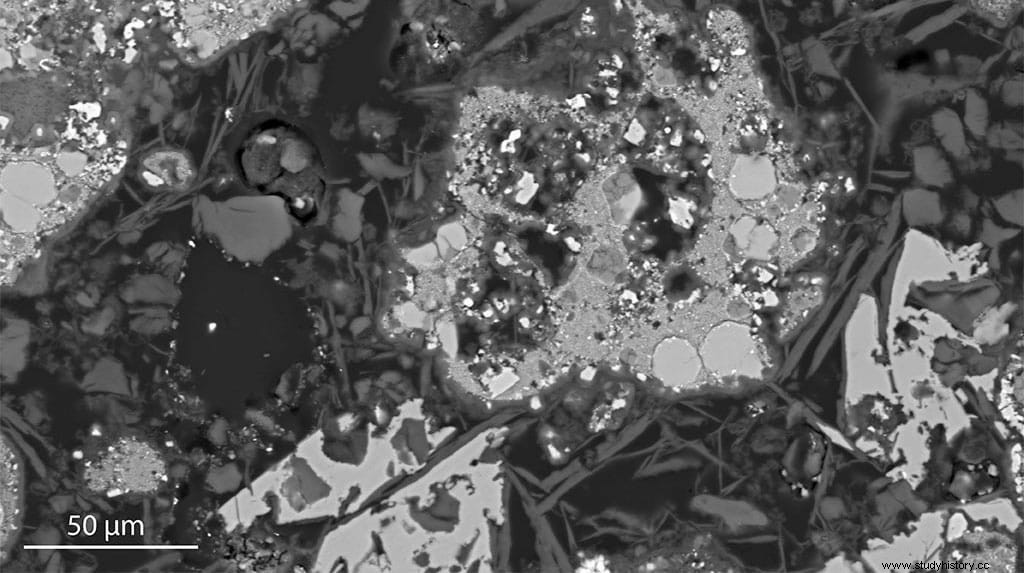
But the tephra that the Romans used for the mortar in the tomb of Cecilia Metella was more abundant in leucite, rich in potassium. Centuries of rainwater and groundwater seeping down the tomb walls dissolved the leucite and released the potassium in the mortar. In modern concrete, that flood of potassium would create expanding gels that would cause microcracks and eventually spalling and deterioration of the structure.
In the grave, however, the potassium dissolved and reconfigured the C-A-S-H bonding phase. Seymour says that X-ray microdiffraction and Raman spectroscopy techniques allowed them to explore how the mortar had changed. We saw domains of C-A-S-H that were intact after 2,050 years and some that were split, faded, or had a different morphology , he says. X-ray microdiffraction, in particular, allowed diffuse domains to be analyzed down to their atomic structure. We see that the diffuse domains acquire a nanocrystalline nature , he affirms.
The remodeled domains obviously create robust cohesive components in the concrete Jackson says. In these structures, unlike Trajan's Markets, much less strätlingite is formed. Stefano Roascio, the archaeologist in charge of the tomb, points out that the study is highly relevant to understanding other ancient and historical concrete structures that use the Pozzolana Rossa aggregate.
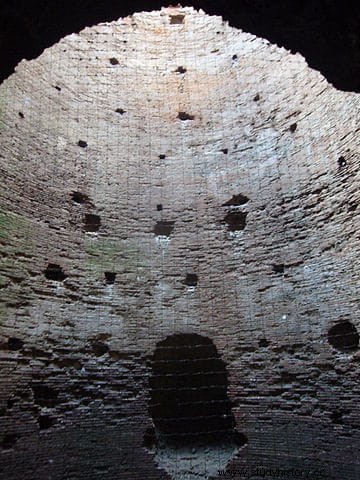
Admir Masic, an associate professor of civil and environmental engineering at MIT, says that the interface between the aggregates and the mortar in any concrete is critical to the durability of the structure. In modern concrete, he says, the reactions that form expanding gels can compromise the interfaces of even the hardest concrete.
It turns out that the ancient Roman concrete interfaces of the tomb of Cecilia Metella are constantly evolving through long-term remodeling , he affirms. These remodeling processes reinforce the interfacial zones and potentially contribute to improving the mechanical performance and resistance to failure of the old material .
Can we recreate that effect today?
Jackson and his colleagues are working to replicate some of the Romans' successes in modern concretes, specifically in a US Department of Energy ARPA-e project to encourage similar beneficial aggregates in concretes that use engineered cellular magmas instead of tephra from ancient Roman structures. The goal is that a concrete similar to Roman concrete could reduce energy emissions from concrete production and installation by 85% and improve the 50-year lifespan of modern marine concrete by four times.
Focusing on the design of modern concretes with interfacial zones of constant reinforcement could provide us with another strategy to improve the durability of modern construction materials Massic says. Doing so by integrating time-tested "Roman wisdom" provides a sustainable strategy that could improve the longevity of our modern solutions by orders of magnitude .
